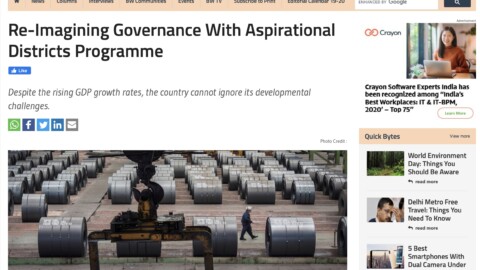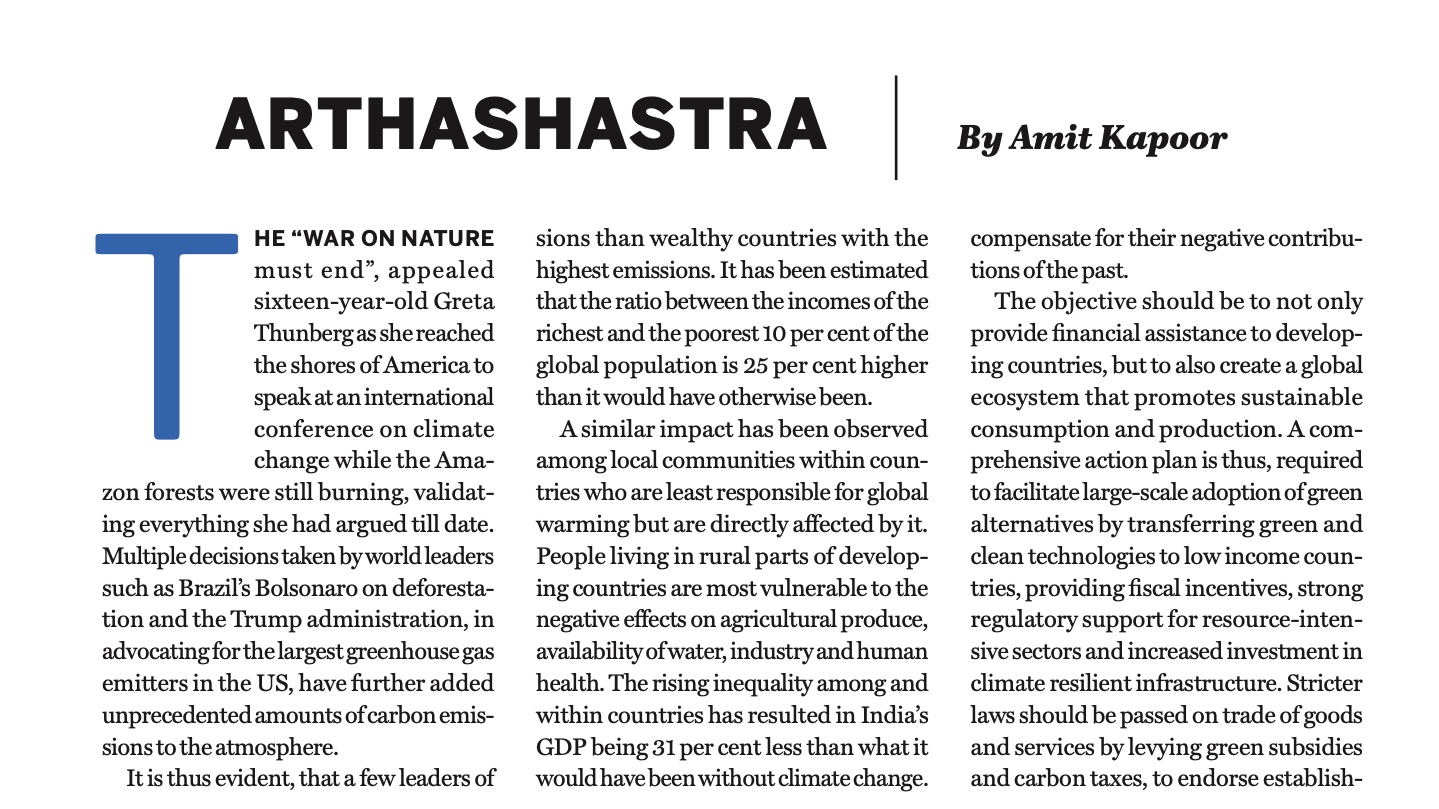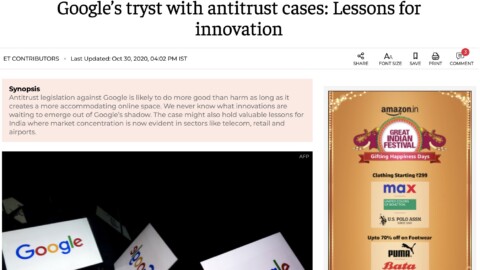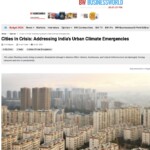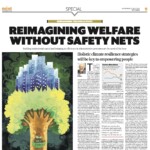Risks Encountered in 2021 and Challenges of 2022 in Businesses and Economy in Asia
Risks are here to stay
As stated by the Global Risk Report 2021 of World Economic Forum, “Among the few risks for businesses in 2021 are the COVID-19 pandemic, climate action failure, human-led environment damage, erosion of societal cohesion, terrorist attacks, digital power concentration, digital inequality, cyber security failure and the US-China trade war.[1]
The year 2021 has been a tough year across continents, COVID 19 onslaught has kept continuing, though subsided partially because of large scale vaccine manufacturing and administration worldwide, yet the danger of variants of the virus still looms large. Coupled with the pandemic have been several other risks such as creaking the economy, escalating unemployment, expanding digital divides, constrained logistic supply chains, strained medical infrastructure, disenchantment amongst youth, and growing social fragmentation.
The impact of these disruptions has become more pronounced and complex because of the convergence of issues economic, environmental, geopolitical, and technical in nature. A number of risks have been faced in almost all domains of private and public lives, businesses and governance in 2021 and would emerge as major challenges in 2022.
The article presents the challenges and risks which businesses have encountered and still continue to face in the light of the COVID-19 pandemic. Even in this grim scenario, there are possibilities galore for sustainable development for the companies.
Volatility & uncertainty of businesses in Asia
Thousands of micro and small industries have been shut down in most of the countries in Asia and the big business houses are still feeling the heat of Covid 19 effects. In the Asia-Pacific region, the impact of interconnected phenomena is being felt acutely. Rising economic disparity, increasing population pressures, ongoing international security concerns, complicated global economic transitions, environmental hazards, and increased technological advancement, are making the business landscapes intricate both locally and regionally, difficult to understand and risk prone.
Security ecosystem is in doldrums; business on downslide; cyber security risks prevalent and perilous; socio-political turmoil paving way to unemployment and corruption; business malpractices leading to legal morass; technological disruptions killing the businesses and organisations and the ongoing onslaught of COVID-19 pandemic are few of the risk scenarios amongst many faced in this year and would continue to be major concerns ahead. The recovery is slow and painstaking.
Of last two decades since the onset of 21st century, the Asia-Pacific region has witnessed high trajectory of economic growth involving huge business transactions and high volume of trade related fright in the waters of Indian Ocean. The growth was punctuated by the economic crisis faced in the year 2008-11, however, it was overcome and the region has now become the powerhouse of world economic growth.
It becomes imperative to analyse the risks which businesses faced and which may lead to the downfall of the economy in this region if the impact of the risks and challenges are not controlled and arrested.
Risks faced & challenges ahead
Tabulated below for ease of understanding are the major current and future risk scenarios that would dominate the business landscape –
Business Risks of Major Concerns in Asia
| Severe energy price shocks | Energy price increases or decreases significantly and places economic pressure on high energy-dependent industries and consumers. Asia, as a net energy importer, is frequently susceptible to rising energy prices. Furthermore, the region’s lowering prices give chances on which it must seize. For example, a continuous period of reduced oil prices has enabled nations like India, Indonesia, and Malaysia to eliminate or cut fossil fuel subsidies, which formerly absorbed a significant amount of yearly government budgets. |
| Economic risks | Includes asset bubbles, debt crises, price instability, unsustainably overpriced assets such as commodities, housing, shares etc. |
| Fiscal crises | Excessive debt burdens generate sovereign debt crises and / or liquidity crises. |
| High unemployment | A sustained high level of unemployment or under utilisation of the productive capacity of the employed population prevents the economy from attaining high levels of employment. |
| Large scale cyberattacks | Large scale cyber attacks or malware cause large economic damages, geopolitical tensions or widespread loss of trust in the internet. |
| COVID-19 – a jittery situation prolonging for the businesses | Health and workforce issues such as health care systems under duress, vaccine roll out and administration posing difficulties, changing work habits resulting in mental disorientation, disenchantments and disillusion in the workforce. |
| Business interruptions | Supply chain disruptions, pent up demands, inflationary trends, changing consumer behaviour |
| Natural Catastrophes | Storms, floods, earthquakes, wildfires |
| Legislation / regulation changes | Trade and tariff wars, economic sanctions, protectionism |
| Geopolitical risks and violence | Developments in the South China Sea, Hong Kong’s protest movements, the maritime security issues In the large part of the Indo-Pacific region, adds complexity to the issues which have disrupted the workflow of the business in the region. These geopolitical risks have not lost their relevance in spite of the world’s focus on COVID-19. Geopolitical instability, limited wars, expanding terrorism, civil wars including, riots and looting may come to the forefront. |
| Macroeconomic developments | Monetary policies, austerity programs, commodity price increase, deflation and inflation[2] |
| Technology-related risks | Disruptive tendencies, rapid rate of change of conducting businesses, service outages, digital inequalities, digital divide, digital dangers. |
COVID impacts on the businesses to continue….
The year 2021 has been marked by unequal recovery as vaccine rollouts create a world of haves and have-nots, with pockets of COVID that have persisted at the bottom of the hierarchical pyramid. Unfortunately, there will be many who fall into the have-not group, and businesses will endure lengthy operational uncertainty as localised limitations are enforced intermittently in reaction to viral surges. The recovery will also be more sluggish since governments with limited budgetary space will be unable to engage in prolonged expenditure.[3]
The most obvious risks and challenges in 2022 one relates to will also be Covid 19 and its variants related such as vaccine and booster related delays which may from production or distribution bottlenecks but also from renewed frequent and prolonged lockdowns affecting supply chains. The consumer behaviour has changed drastically, the demands have dipped. The similar behaviour pattern may continue for a while. An inflationary shock could appear due to supply constraints on the back of pent-up demand from a smooth vaccine rollout and widespread optimism. Supply constraints would obviously hit economies with current account deficits more severely.[4]
The delayed rollout of vaccinations in some countries, diminishing vaccine efficacy, and the arrival of the Omicron variant pose the greatest danger to the region’s sustainable recovery in 2022. If new versions of the virus prove resistant to existing vaccinations and spread rapidly across borders, the situation might deteriorate further, placing more burden on healthcare systems.
Because of its reliance on manufacturing, Asia is particularly vulnerable if global supply chains continue to be disrupted indefinitely. Expect further localised lockdowns and targeted travel restrictions, which may panic investors and cause financial markets to plummet. They could also inflict additional misery on the already wounded travel and tourist industry, as well as heighten fears about a delayed departure from the epidemic. The current times of pandemic uncertainty have threatened businesses, society, governance and individuals as well.
Other serious implications for the businesses…..
Asian economy have been severely impacted by the pandemic, yet there are significant disparities between nations. Beyond the scope of lockdowns and the magnitude of policy responses, whether fiscal or monetary in nature, the fundamental features of Asian economies explain disparities in growth patterns as well as variances in growth rates.
Risk-off episodes have complicated their required external finance, limiting fiscal assistance for countries with the greatest current account deficits. India, Indonesia, and the Philippines are examples of this. As a result of more successful containment measures and, in many cases, bigger fiscal and monetary responses, the Chinese mainland, as well as other economies such as Vietnam and Taiwan, and, to a lesser extent, South Korea and Japan, have been less affected. Furthermore, several of these nations’ sectoral specialisations, whether in technology, electronics, or medical supplies, have aided in increasing exports under COVID-19. This is evident on the Chinese mainland, as well as in South Korea and Taiwan.
The rising tensions between the United States and China are causing widespread anxiety, particularly as they shift from economic to security problems. The two critical flashpoints impacting the dynamics of the Indian Ocean Region are undoubtedly Taiwan and the South China Sea. QUAD was already existing and getting firmer and overt on anti-China stance. The recent security alliance between USA, UK and Australia, AUKUS has added another dimension to the already complex geopolitical dynamics in the region. This delicate situation in Indo-Pacific region will surely impact the businesses and the supply chains.
Overall, after a large dip in 2020 and a gradual rebound in 2021, growth is starting and corporations are resuming investment, our outlook remains positive for 2022 but not without acknowledging the hangover of the pandemic and the Damocles sword hanging in disguise of omicron variants and others. Rather than being a positive outcome, rapid debt accumulation is a significant negative consequence of the coronavirus and the inability for the policy response, not only in Asia but around the world.
The second negative effect is an escalation of demographic challenges owing to the global decline in fertility rates. This has a significantly greater impact on Asia’s ageing economies than on nations with a still favourable demographic dividend. On the plus side, COVID-19 has a silver lining: the signing of the Regional Comprehensive Economic Partnership Agreement, which might improve regional trade integration.
Sustainable development will pave way for the companies
The Environmental, Social and Governance (ESG) have become the order of the day in the business world and we presume that the companies and the businesses to build resilience to surmount the challenges as posed by Covid 19 and others. The companies will be capable of absorbing further and future shocks, if their long term goals are aligned with the ESG as this, will reduce their capital costs in the long run and improve valuation.
In Asia also, the trend of investors are investing in ESG funds which have been outperforming their benchmarks. Yet there is a lot of scope for the companies to include ESG aspects. They must understand the larger picture and the modalities and the action plan to implement to reap benefits. The ‘box ticking’ culture of most of the companies on this front will not pay any dividend and rather frustrate the employees and the management. It is better to improve the operational efficiencies in alignment with the ESG objectives. The investors, consumers, civil societies, NGOs and the government will be coming forward for the companies investing in ESG issues.
Hong Kong, Singapore and Japan are the leading nations in Asia which are taking the ESG issue seriously for their economic growth. Other nations notably Indonesia and Taiwan are following suit. The other countries too must flag the ESG implementation amongst the companies and businesses.
Silver lining
We live in an increasingly volatile world, where uncertainty prevails and change is the only constant. Businesses too face rapidly changing environments due to the accelerated growth of emerging technologies, most of which are disruptive in nature. The businesses thus have to adapt to the technologies, changing work environments or risk falling behind. The spectrum of challenges range from supply chain issues due to shipping blockages and disruptions to natural catastrophesto climate action failure to social divisions to digital inequalities to intricate geopolitical landscape, and all of these will have implications on the businesses which may hamper their recovery and growth. Risk experts have identified that environmental and geopolitical issues are more of major concerns in the Asia region.
Businesses and organisations must plan ahead for the possible disruptions caused by increasing economic disparity. This includes anticipating the expected pressure on labour issues that would result in an increase in industrial action and protests. As a result, firms should prioritise the maintenance of labour relations and the implementation of people management initiatives.
Finally, such a complicated geopolitical outlook, coupled with the lessons learned from COVID-19 regarding supply disruptions could push the reshuffling of value chains further, with important consequences for Asia.[5] The risk of decoupling, or even de-globalisation if the term is used more broadly, might extend beyond trade to include technology and even finance, with clear negative ramifications for growth in Asia and throughout the world in both directions. Still, there is hope.
As the digital economy is exploding, so is the exposure to cyber threats and accordingly, there is a dire need to up-skill the digital knowledge of the workforce. Digital inequality and the digital divide is to be taken care of by the state governments to provide equal opportunities to all otherwise it will lead to polarisation in the workforce that will be detrimental for the businesses and societies as such.
There has to be more collaborations between private and public companies, communities, NGOs and Government to synergise their energies to take the challenges head-on and find solutions together. The government, on their part, have to revive the MSME sector through stimulus packages. Maximum emphasis is to be laid on sustainable development projects involving green infrastructure and clean energy projects.
In essence, to outsmart the risks and overcome the challenges, and coming out of the clutches of mere survival, the eyes of the companies and businesses must be fully focused on building resilience and agility and maintaining these through synergising the efforts by private and public sectors aided by the NGOs, communities and the government and exploiting the digital technologies as also adapting to the changes brought in by the disruptions.
The article was published in the January 2022 issue with “Business Transformation Asia”.
The article can be looked on the pages from 22 – 27 at https://issuu.com/businesstransformation/docs/bt-asia-issue-3


